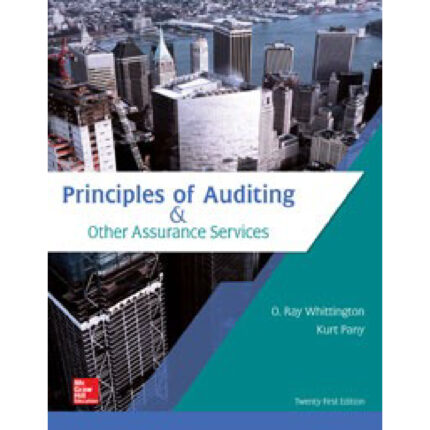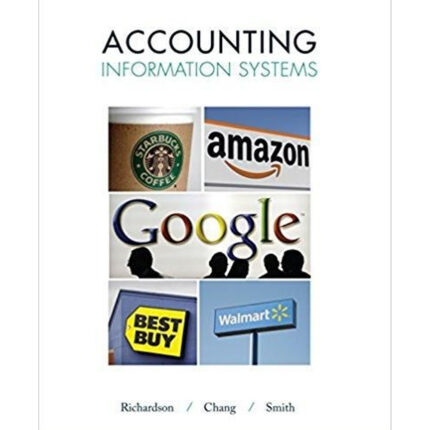Intermediate Accounting IFRS Edition 2nd Edition By Kieso Weygandt Warfield – Test Bank
CHAPTER 11
Depreciation, Impairments, and Depletion
ASSIGNMENT CLASSIFICATION TABLE (BY TOPIC)Topics
Questions Brief Exercises
Exercises
Problems Concepts for Analysis
1. Depreciation methods; meaning of depreciation; choice of depreciation methods. 1, 2, 3, 4, 5, 6, 10, 13, 19, 20, 28 1, 2, 3, 4, 5, 8, 14, 15 1, 2, 3 1, 2, 3, 4
2. Computation of
depreciation. 7, 8, 9,
12, 30 1, 2, 3, 4 1, 2, 3, 4,
5, 6, 7,
10, 15 1, 2, 3, 4, 5, 6, 7, 8 1, 2
3. Depreciation base. 2, 7 5 8, 14, 18 1, 2, 3,
5, 6 2
4. Errors; changes in estimate. 12 7 11, 12,
13, 14 3, 4 2
5. Depreciation of partial periods. 14 2, 3, 4 3, 4, 5, 6,
7, 15 1, 2, 3,
6, 7
6. Component depreciation. 11 6, 8 9, 16, 17
7. Impairment of value. 15, 16, 17, 18, 28 9 18, 19, 20 9, 10
8. Depletion. 20, 21, 22, 23, 24 10 21, 22, 23 11, 12
9. Ratio analysis. 27 12 28
10. Convergence. 28, 29
*11. Revaluation accounting. 25, 26, 28, 29, 30 11 24, 25, 26, 27, 29 13, 14
*This material is covered in an appendix to the chapter.
ASSIGNMENT CLASSIFICATION TABLE (BY LEARNING OBJECTIVE)
Learning Objectives Brief Exercises
Exercises
Problems
1. Explain the concept of depreciation.
2. Identify the factors involved in the depreciation process. 2, 3, 4, 5, 7 1, 2, 3, 4, 5, 6,
7, 8, 9, 10, 11, 12, 13, 14, 15 1, 2, 3,
4, 5, 6,
7, 8
3. Compare activity, straight-line and diminishing-charge methods of depreciation. 1, 2, 3, 4, 7 1, 2, 3, 4, 5, 6,
7, 8, 9, 10, 11, 12, 13, 14, 15 1, 2, 3, 4, 5, 6, 7,
8, 12
4. Explain component depreciation. 6, 8 9, 16, 17
5. Explain the accounting issues related to asset impairment. 9 18, 19, 20 9, 10
6. Explain the accounting procedures for depletion of mineral resources. 10 21, 22, 23 11, 12
7. Explain the accounting for revaluations. 11 24, 25, 26,
27, 29 5, 13, 14
8. Explain how to report and analyze property, plant, equipment, and mineral resources. 12 28
*9. Explain revaluation accounting procedures. 11 29 13, 14
ASSIGNMENT CHARACTERISTICS TABLE
Item
Description Level of Difficulty Time
(minutes)
E11-1 Depreciation computations—SL, SYD, DDB. Simple 15–20
E11-2 Depreciation—conceptual understanding. Moderate 20–25
E11-3 Depreciation computations—SYD, DDB—partial periods. Simple 15–20
E11-4 Depreciation computations—five methods. Simple 15–25
E11-5 Depreciation computations—four methods. Simple 20–25
E11-6 Depreciation computations—five methods, partial periods. Moderate 20–30
E11-7 Different methods of depreciation. Simple 25–35
E11-8 Depreciation computation—replacement, nonmonetary exchange. Moderate 20–25
E11-9 Component depreciation. Simple 15–20
E11-10 Depreciation computations, SYD. Simple 10–15
E11-11 Depreciation—change in estimate. Simple 10–15
E11-12 Depreciation computation—addition, change in estimate. Simple 20–25
E11-13 Depreciation—replacement, change in estimate. Simple 15–20
E11-14 Error analysis and depreciation, SL and SYD. Moderate 20–25
E11-15 Depreciation for fractional periods. Moderate 25–35
E11-16 Component depreciation. Simple 10–15
E11-17 Component depreciation. Simple 10–15
E11-18 Impairment. Simple 10–15
E11-19 Impairment. Simple 15–20
E11-20 Impairment. Simple 15–20
E11-21 Depletion computations—oil. Simple 10–15
E11-22 Depletion computations—mining. Simple 15–20
E11-23 Depletion computations—minerals. Simple 15–20
E11-24 Revaluation accounting. Simple 10–15
E11-25 Revaluation accounting. Simple 10–15
E11-26 Revaluation accounting. Moderate 15–20
E11-27 Revaluation accounting. Moderate 10–15
E11-28 Ratio analysis. Moderate 15–20
*E11-29 Revaluation accounting. Moderate 20–25
P11-1 Depreciation for partial period—SL, SYD, and DDB. Simple 25–30
P11-2 Depreciation for partial periods—SL, Act., SYD, and DDB. Simple 25–35
P11-3 Depreciation—SYD, Act., SL, and DDB. Moderate 40–50
P11-4 Depreciation and error analysis. Complex 45–60
P11-5 Comprehensive property, plant, and equipment problem. Moderate 25–35
P11-6 Comprehensive depreciation computations. Complex 45–60
P11-7 Depreciation for partial periods—SL, Act., SYD,
and DDB. Moderate 30–35
ASSIGNMENT CHARACTERISTICS TABLE (Continued)
Item
Description Level of Difficulty Time
(minutes)
P11-8 Depreciation methods. Moderate 25–35
P11-9 Impairment. Moderate 15–25
P11-10 Impairment. Moderate 30–35
P11-11 Mineral resources. Moderate 15–20
P11-12 Depletion and depreciation—mining. Moderate 25–30
*P11-13 Revaluations. Moderate 20–25
*P11-14 Revaluations. Moderate 25–35
CA11-1 Depreciation basic concepts. Moderate 25–35
CA11-2 Depreciation—strike, units-of-production, obsolescence. Moderate 25–35
CA11-3 Depreciation concepts. Moderate 25–35
CA11-4 Depreciation choice. Moderate 20–25
ANSWERS TO QUESTIONS
1. The differences among the terms depreciation, depletion, and amortization are that they imply a cost allocation of different types of assets. Depreciation is employed to indicate that tangible plant assets have decreased in carrying value. Where mineral resources (wasting assets) such as timber, oil, coal, and lead are involved, the term depletion is used. The expiration of intangible assets such as patents or copyrights is referred to as amortization.
2. The factors relevant in determining the annual depreciation for a depreciable asset are the initial recorded amount (cost), estimated residual value, estimated useful life, and depreciation method.
Assets are typically recorded at their acquisition cost, which is in most cases objectively determinable. But cost assignment in other cases—“basket purchases” and the selection of an implicit interest rate in asset acquisitions under deferred-payment plans—may be quite subjective, involving considerable judgment.
The residual value is an estimate of an amount potentially realizable when the asset is retired from service. The estimate is based on judgment and is affected by the length of the useful life of the asset.
The useful life is also based on judgment. It involves selecting the “unit” of measure of service life and estimating the number of such units embodied in the asset. Such units may be measured in terms of time periods or in terms of activity (for example, years or machine hours). When selecting the life, one should select the lower (shorter) of the physical life or the economic life. Physical life involves wear and tear and casualties; economic life involves such things as technological obsolescence and inadequacy.
Selecting the depreciation method is generally a judgment decision, but a method may be inherent in the definition adopted for the units of service life, as discussed earlier. For example, if such units are machine hours, the method is a function of the number of machine hours used during each period. A method should be selected that will best measure the portion of services expiring each period. Once a method is selected, it may be objectively applied by using a predetermined, objec-tively derived formula.
3. Disagree. Accounting depreciation is defined as an accounting process of allocating the costs of tangible assets to expense in a systematic and rational manner to the periods expected to benefit from the use of the asset. Thus, depreciation is not a matter of valuation but a means of cost allocation.
4. The carrying value of property, plant, and equipment is its cost less accumulated depreciation. If the company estimates that the asset will have an unrealistically long life, periodic depreciation charges, and hence accumulated depreciation, will be lower. As a result the carrying value of the asset will be higher.
5. A change in the amount of annual depreciation recorded does not change the facts about the decline in economic usefulness. It merely changes reported figures. Depreciation in accounting consists of allocating the cost of an asset over its useful life in a systematic and rational manner. Abnormal obsolescence, as suggested by the plant manager, would justify more rapid depreciation, but increasing the depreciation charge would not necessarily result in funds for replacement. It would not increase revenue but simply make reported income lower than it would have been, thus preventing overstatement of net income.
Recording depreciation on the books does not set aside any assets for eventual replacement of the depreciated assets. Fund segregation can be accomplished but it requires additional managerial action. Unless an increase in depreciation is accompanied by an increase in sales price of the product, or unless it affects management’s decision on dividend policy, it does not affect funds.
Questions Chapter 11 (Continued)
Ordinarily higher depreciation will not lead to higher sales prices and thus to more rapid “recovery” of the cost of the asset, and the economic factors present would have permitted this higher price regardless of the excuse given or the particular rationalization used. The price could have been increased without a higher depreciation charge.
The funds of a firm operating profitably do increase, but these may be used as working capital policy may dictate. The measure of the increase in these funds from operations is not merely net income, but that figure plus charges to operations which did not require working capital, less credits to operations which did not create working capital. The fact that net income alone does not measure the increase in funds from profitable operations leads some non-accountants to the erroneous conclusion that a fund is being created and that the amount of depreciation recorded affects the fund accumulation.
Acceleration of depreciation for purposes of income tax calculation stands in a slightly different category, since this is not merely a matter of recordkeeping. Increased depreciation will tend to postpone tax payments, and thus temporarily increase funds (although the liability for taxes may be the same or even greater in the long run than it would have been) and generate gain to the firm to the extent of the value of use of the extra funds.
6. Assets are retired for one of two reasons: physical factors or economic factors—or a combination of both. Physical factors are the wear and tear, decay, and casualty factors which hinder the asset from performing indefinitely. Economic factors can be interpreted to mean any other constraint that develops to hinder the service life of an asset. Some accountants attempt to classify the economic factors into three groups: inadequacy, supersession, and obsolescence. Inadequacy is defined as a situation where an asset is no longer useful to a given enterprise because the demands of the firm have increased. Supersession is defined as a situation where the replacement of an asset occurs because another asset is more efficient and economical. Obsolescence is the catchall term that encompasses all other situations and is sometimes referred to as the major concept when economic factors are considered.
7. Before the amount of the depreciation charge can be computed, three basic questions must be answered:
(1) What is the depreciation base to be used for the asset?
(2) What is the asset’s useful life?
(3) What method of cost apportionment is best for this asset?
8. Cost €800,000 Cost €800,000
Depreciation rate X 30%* Depreciation for 2015 (240,000)
Depreciation for 2015 €240,000 Undepreciated cost in 2016 560,000
Depreciation rate X 30%
2015 Depreciation €240,000 Depreciation for 2016 €168,000
2016 Depreciation 168,000
Accumulated depreciation
at December 31, 2016 €408,000
*(1÷ 5) X 150%
Questions Chapter 11 (Continued)
9. Depreciation base:
Cost $162,000 Straight-line, $147,000 ÷ 20 = $ 7,350
Residual (15,000)
$147,000 Units-of-output, $147,000 X 20,000 = $35,000
84,000
Working hours, $147,000 X 14,300 = $50,050
42,000
Sum-of-the-years’-digits, $147,000 X 20/210* = $14,000
Double-declining-balance, $162,000 X 10% = $16,200
10. From a conceptual point of view, the method which best matches revenue to expenses should be used; in other words, the answer depends on the decline in the service potential of the asset. If the service potential decline is faster in the earlier years, an accelerated method would seem to be more desirable. On the other hand, if the decline is more uniform, perhaps a straight-line approach should be used. Many firms adopt depreciation methods for more pragmatic reasons. Some companies use accelerated methods for tax purposes but straight-line for book purposes because a higher net income figure is shown on the books in the earlier years, but a lower tax is paid to the government. Others attempt to use the same method for tax and accounting purposes because it eliminates some recordkeeping costs. Tax policy sometimes also plays a role.













Reviews
There are no reviews yet.